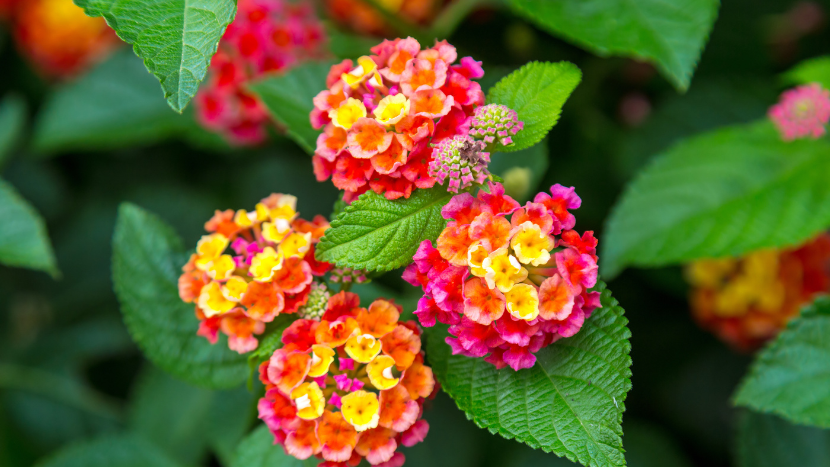
The Ultimate Guide to Seasonal Color
5 of the Most Frequently Asked Questions
Ever wonder why some properties have spectacular entrances? Or signage that really catches the eye? You can thank seasonal color displays. These carefully curated plantings have been designed to grab your attention and set the stage for the property beyond. In this guide, we’ll add a little… ahem... color to the topic, and tackle some of the most frequently asked questions. Starting with…

What’s the difference between annuals and perennials?
- Annuals: Also known as seasonal color, these are plants that complete their lifecycle in one growing season and will not return the following year.
- Perennials: These are plants that live for two years or more. They either die back in the winter and re-emerge in the spring or retain their above-ground growth all year long.
Each has its advantages. Seasonal color is great for trying out new, bold looks. It’s also great for filling in gaps around your perennials for a periodic refresh. Some people find this especially helpful for making new landscapes look lush while waiting for young plants to fill in.
On the other hand, long-lasting perennials, like coneflowers, daylilies, and hostas, can save you money by providing color year after year. However, it’s important to note some perennials are hardier than others, so not all are completely worry-free. More tender varieties may need protection from harsh winter weather in order to survive the cold temps and make their triumphant return in spring.
How do you choose between annuals and perennials?
The answer is you don’t! In many cases, using them together is the best solution. Think of perennials as your base and annuals as your seasonal flair. Generally, perennials are in bloom for a shorter period, so annuals provide a much-needed color boost right when your perennials fade.
How often do you need to change out your seasonal color?
Depending on your region, you’ll likely have two to three rotations per year. Generally speaking, that translates to:
- An installation in the spring after the threat of frost has passed
- A summer installation of more heat-tolerant plant material, just as the spring display begins to fade
- An installation of fall annuals as the weather starts to cool
How can you get the most bang for your buck from your seasonal color display?
Soil quality has a major impact on the performance of your seasonal color installation. It can be the difference between a lackluster display and one that goes gangbusters. It’s important to replenish nutrients to give each installation the tools it needs to grow strong, vibrant, and long into the season. Periodically amending the soil with a high-quality fertilizer prior to a new installation is key.
Other important factors that will help you get the most from your investment are mulch and weed control. Maintaining a 2 to 3-inch layer of mulch will help regulate the soil temperature and prevent weeds. Maintaining a good weed prevention program with your landscape partner, including pre-emergent and post-emergent applications, will also keep weeds at bay throughout the season.
Which annuals are best suited for each season?
Generally speaking, here are some of our favorite seasonal standouts:
Spring
Petunias make a lovely accent and, in some regions, will go strong into the summer. Their variety in color and pattern—from solids to stripes and speckles—keeps things interesting. Dusty miller makes for an interesting accent with its silver, velvety foliage; and like petunias, they may persist into the summer. Snapdragons are an excellent choice for early spring, especially if your space can accommodate their height (up to 3 feet tall).
Summer
With their waxy leaves and punchy colors, begonias are a striking touch for areas that don’t get direct sun. For areas with full sun, you can’t beat zinnias for their nonstop blooms all summer long. And in the toughest growing conditions, lantana is a hardy choice that doesn’t sacrifice any color. In colder climates, it’s an annual, but in warmer locales, it’s a popular perennial.
Fall
Pansies are fantastic in the fall because they’re frost tolerant and will continue to bloom into the winter. We also love ornamental kale and cabbage for their rich hues—and bonus: they’re frost tolerant, too. For containers, mums look great thanks to their dense foliage and bursts of flowers in all the traditional fall colors.
Ready to create a showstopping seasonal color program for your property? Connect with our experts. And be sure to sign-up for our Dig Into series for more helpful landscape insights delivered straight to your inbox!




